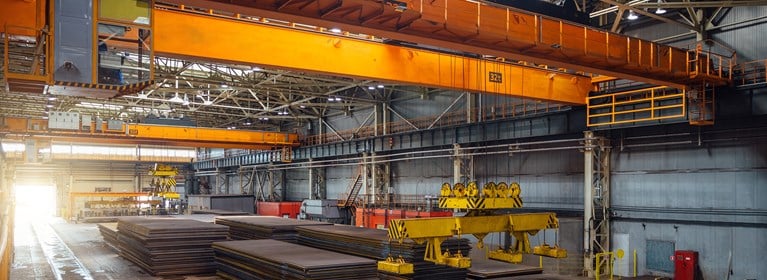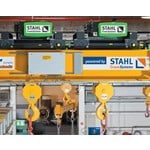
Top 7 Myths and Facts About Overhead Crane and Hoist Operations
By Columbus McKinnon | Nov 30, 2023
Many industries rely on overhead cranes and hoists, but misconceptions about their operations can lead to inefficiencies and safety hazards. In this article, we debunk seven common myths about cranes and hoists and provide insights into best practices.
- Monorail Load Labelling
- Myth: All monorails must be labeled with a rated load.
- Reality: Labeling monorails with their rated loads is recommended for safety but not mandatory. ASME B30.17-1.1.2 Monorail guidelines suggest that if loads are marked, they must be visible from the ground. A qualified professional must determine the rated load for safe operations.
- Understanding Rated Loads
- Fact: The rated loads for hoists and trolleys can differ from the crane’s overall load capacity.
- Note: It's imperative to prevent overloading the crane beyond its rated load. Adequate operator training is essential for understanding and adhering to the maximum safe working load limits.
- Load Test Frequency for Hoists and Cranes
- Fact: Annual load tests are not obligatory for hoists and cranes.
- Details: After the initial installation test, there's no fixed timeline for subsequent tests. Local regulations may require tests every four years. Provided there are no modifications or repairs, and the crane remains safe and effective, it can operate indefinitely without additional tests.
- Monthly Inspection Records Requirement
- Myth: Monthly inspection records are always required.
- Reality: OSHA Regulation 1910.179 mandates monthly checks of specific crane parts, with a signed record. However, underhung hoist systems only require regular inspections, not necessarily with written records.
- Certification for Inspection and Repair
- Myth: Certifications are not needed for inspecting and repairing cranes and hoists.
- Fact: While certifications are not mandated, ASME Standards recommend that inspectors have relevant qualifications or proven expertise. Certification assures skill level and regulatory compliance.
- Yearly Hoist Disassembly for Inspection
- Myth: Hoists must be disassembled annually for inspection.
- Advice: Follow the manufacturer's manual for guidance. The extent of disassembly during inspections should be based on specific findings, prioritizing safety and functionality.
- Latches on Chain Sling Hooks
- Myth: Chain slings always require latches on hooks.
- Fact: Regulations like OSHA 1910.84 state that while most crane hooks need a latch, chain slings don’t unless they pose a safety risk.
Understanding the distinction between myths and facts in the complex field of overhead crane and hoist operations is crucial for maintaining efficiency and safety. Always align your procedures with recognized standards and refer to the manufacturer's guidelines and relevant regulations for best practices.
Related Articles
Learn facts about overhead crane compliance and which cranes are regulated by OSHA.
Dangers Of Overhead Crane Side Pulling
Staying Safe in Overhead Lifting Applications
Learn how to prevent side pulling on cranes and hoists in your facility and available technologies designed to reduce crane side pulling.
Safety & Crane Controls
Columbus McKinnon Material Handling Experts Jon Walters, Casey Cummins and Bob Schmitt Discuss Safety & Crane Controls
Columbus McKinnon material handling experts Jon Walters, Bob Schmitt and Casey Cummins discuss how crane controls can be used to improve safety throughout your facility.



 North America - EN
North America - EN





